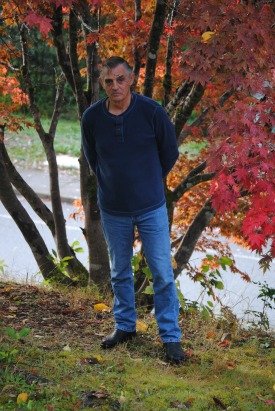By Gagandeep Ghuman
Published: Nov. 10, 2012
Garibaldi Highland resident Jim Raymond worries about the sliding market value of his home.
And he says the district has to share some blame for it.
Raymond said the district removed the retaining rock along his house a few years ago, leaving the house vulnerable to slope erosion.
 The retaining wall along the road, at the bottom of his house, has worsened the erosion, he said.
The retaining wall along the road, at the bottom of his house, has worsened the erosion, he said.
He has been trying to get the district to do something about it, but to no avail.
“I hope this doesn’t crack the foundation of our house in the next five or ten years,” he said.
The Raymonds first bought their house in 1988. One of its selling points was two street entrances.
The owner could access the house through Thunderbridge Road, or through the Boulevard.
The Raymonds wanted to turn the home into a Bread and Breakfast, with a convenient second entrance for the guests.
Along came Quest University, and plans for a bridge on the Boulevard to connect it to the university.
Raymond said the municipality closed the second access to his house without any discussion.
Then, they removed the retaining rocks along the house, and put a retaining wall at the bottom.
Next year, he noticed the slope erosion. By next year, he saw more signs: The roots of the trees planted long ago were now visible.
Earlier, they could actually walk down to the base of their house right down to the fence they build to mark their property.
Now, they can only tumble down to the base.
“First our second access was taken away, and now we have the slope erosion,” Raymond said.
Last year, he was paid a visit by district employees Kevin Ramsay and Brian Barnett.
Raymond said they refuted his view in strong words, and said he had no ‘before’ or ‘after’ pictures to prove the slope erosion started with the removing of retaining rocks.
On opening up the second access, the visitors were willing to make a concession.
Raymond could have the second access opened up—for $6,000.
“They said not one penny of the $6 million budget will go for this,” Raymond said.
They did, however, commission a geotech hazard report last year.
The report concluded that the slope is “currently stable.”
The report suggested that Raymond keeps monitoring the situation, which he has.
“The slope erosion continues, and I have no idea where it will be in the next few years,” Raymond noted.

